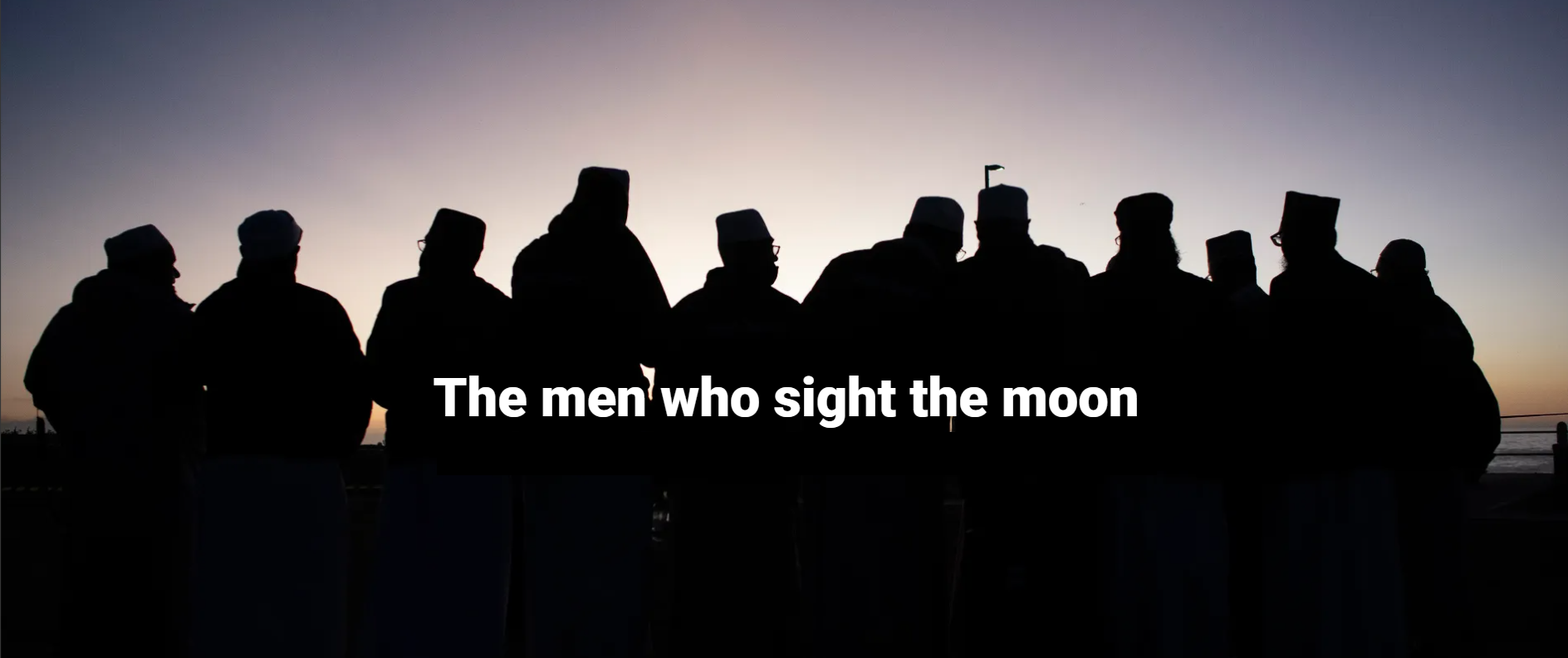Society Structure
President – Imam Yusuf Pandy
Chairman – Sh Safwaan Sasman
Vice Chairman – Moulana Azim Katieb
Treasurer – Shaamiel Adams
Secretary – Abdulatief Salie
Asst. Secretary – Rashaad Martin
Astronomical Advisors – SAAO
History
Declaring the beginning of an Islamic month is a religious matter, and it is the duty and responsibility of the MJC to issue a Decree to that effect. However, according to the Cape Town moon sighting tradition, each “maankyker” took pride in their duty. The historic crescent watchers merely had to report their observations to the appointed MJC official. The loose observations of the “maankykers” of the individual Jamaat were formalized in 1952 by the inauguration of the Crescent Observer’s Society. The Society had one primary objective: to attempt the sighting of the new crescent moon (Hilaal) on the completion of every 29th day of the lunar month.
To this day, the exclusive function of the Society is to search for the Hilaal on the prescribed day. The MJC pays tribute to the founders and pious predecessors who maintained their high standards of sightings and scientific record-keeping over the last 50 years and more, a record unparalleled in the history of moon sighting in South Africa.
The Crescent Observer’s Society members are experienced “maankykers” who have developed close working relationships with the South African Astronomical Society. As a result, the Society is nationally and internationally recognized for its sterling work.
Founding Fathers
Sheikh Mogamat Shakier Gamieldien
Hadjee Eesa Jacobs
Hadjee Mogamat Bassier
Hadjee Suleiman “Boltaai” Abrahams
Hadjee Abdul Gamiet “Boeta Ballie” Samsodien
Boeta Magmoet “Moetoe” Kamaar
Boeta Yusuf Norton
Boeta Abdullah “Taata” Salie
Hadjee Moestafa Moos
Boeta Dawood “Dout” Peterson
Boeta Moosa Peterson
Boeta Moegamat Moerat
Boeta Ismail Jattiem
Hilaal Sighting
Communication between sighting points has changed considerably throughout the years. Candle lamps were initially flashed in certain motions to indicate a successful sighting. These were later replaced by the use of flashlights but as street and traffic lighting increased so too did miscommunication. Firework rockets were then used but, today, communications are via mobile phone. When the sighting of the crescent moon is confirmed, the appointed Hakim Darooriy (Arbitrator) is informed, whose duty it is to pass a judgment that the new Islamic month has commenced. In the event of non-sighting, the Hakim Darooriy liaises with all the Hilaal committees in South Africa and thereafter issues his Hukum.
The appointed sighting points in Cape Town were selected centuries ago. The first point is Beachfront, 4 km from the Cape Town Central Business District, at Three Anchor Bay. The other point is 340 m above sea level, on Signal Hill.
The Maankyker
Maankyker is the local term used for the crescent moon-watcher, where “maan” is Afrikaans for “moon” and “kyker” means “watcher”. The early “maankykers” formed a loose alliance, and by some unspoken rule assumed their watching duties from the same observation vantage points. Each had a responsibility to report his observations to the Imam of his congregation.
Today, with co-operation between the crescent observers of different places in South Africa, and particularly in the main city centres, the exact same sightings are reported to the Imams. These are communicated to the Crescent Observer’s Society in Cape Town and then by telephone between the different Ulama bodies and the MJC. The advent of the Islamic month is unanimously declared via the Radio Voice of the Cape.

